
Arquivo para 2020
Corona virus: flexibilization and the endemic
Several countries in the world are preparing for a second wave of the corona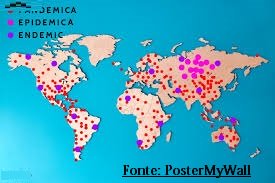 virus, Brazil has not left the first and seems to be stationed on a plateau around a thousand daily deaths, many analysts claim that Brazil is different due to its territorial extension, social inequality and density population, very well, but India and China too and control the infection with harsh measures.
virus, Brazil has not left the first and seems to be stationed on a plateau around a thousand daily deaths, many analysts claim that Brazil is different due to its territorial extension, social inequality and density population, very well, but India and China too and control the infection with harsh measures.
Several specialists and infectologists point out that the flexibilization policy can be adopted if the possibility of reversion is admitted, that is, where the number of cases worsens returns to quarantine, but the depletion of the population after more than 100 days no longer allows.
Aline Dayrell, professor and coordinator of the UFMG (Brazilian Minas Gerais Federal University) Epidemiology course, says that we will only have total security if 70% becomes immune, see that the same indexes of social isolation are desired, and Prof. Carlos Fortaleza infectious disease at UNESP-Botucatu (Paulista State University) says the second wave is the possibility of any communicable disease, as long as the population is not immune.
India with more than 2 months in April, after the first case of infection had 800 and 27 thousand infected, being more populous than Brazil, but the numbers accelerated and 4 days ago it registered 2 thousand daily deaths, showing that even the measures harsh were not enough.
China and New Zealand, which apparently had controlled the corona virus, already admit that it is an endemic, that is, that it is not possible to completely eradicate the pandemic without a vaccine.
“The risk of spreading the epidemic is very high, so we must take resolute and decisive action,” said Xu Hejian, spokesman for the Beijing city government, the epicenter of the second wave of covid 19, in New Zealand. two people who came from the UK to attend a funeral, an exceptional case that the government admits and will review.
Post-truth time or hermeneutics
Hermeneutics is one that allows a worldview and an interpretation of different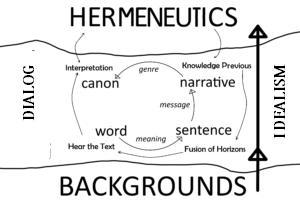 facts, it does not mean manipulation of the truth, but exactly the unveiling of what ideologies and non-practical theories hide (there is no phronesis, practical wisdom).
facts, it does not mean manipulation of the truth, but exactly the unveiling of what ideologies and non-practical theories hide (there is no phronesis, practical wisdom).
What happens is that the search for the absolute spirit, the establishment of total truths was actually totalitarian, that is, they did not admit a different worldview, the dialog was simply linked to a pre-established truth, so there were truths a priori .
Knowledge for Immanuel Kant begins with experience, and reason would organize this matter according to its own forms, with the existing structures in knowledge, so information would be a way to organize the matter that comes from experience.
Although “a priori” is generally referred to as an adjective of knowledge, it is also used as an adjective to modify nouns, such as truth, so there would be truth a priori, and this is one of the tenets of idealism.
But the truth for centuries has remained veiled, it has always been established by certain forms of power, but this is the time when the truths begin to be revealed, not by journalists and controlled groups that are part of fans, but the armed crowd of photos and cell phones , cameras present in many surveillance places, but the big leap is awareness.
It is no coincidence that this is the great current topic, from philosophical hermeneutics, the question of historical consciousness that is no longer deterministic, romantic or dogmatic to the question of whether intelligent machines can be aware and ultimately “imitate” man .
For Christian culture this can go to another point, a time when the truth is revealed, according to the evangelist Matthew 10: 26-29:
“Do not be afraid of men, because there is nothing covered up that is not revealed, and there is nothing of hidden that is not known. What I say to you in the darkness, say it in the light of day; what you hear at the ear, proclaim it over the roofs! Do not be afraid of those who kill the body, but cannot kill the soul! On the contrary, fear the one who can destroy the soul and the body in hell! ”.
Philosopher Peter Sloterdijk, who is not a Christian, said that the pandemic put us “all on our knees”, I would say that not everyone still has those who do not admit the mystery beyond our ability to understand and among the religious those who are not yet knees, at least out of compassion for those who suffer.
Scheilemacher’s Hermeneutics to Gadamer
The revival of hermeneutics, it was confined to ancient classical culture as a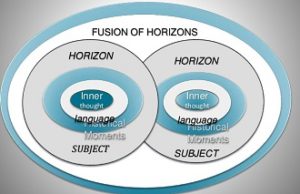 strand of classical philosophy, made by Schleiermacher (1768-1834).
strand of classical philosophy, made by Schleiermacher (1768-1834).
For Heidegger, hermeneutics is equivalent to the phenomenology of existence, that is, things that are open to interpretation, must be analyzed according to the possibilities of existing and manifesting in their historical time, but their understanding of history is different from Dilthey.
His work finds its first echo in Wilhelm Dilthey (1833-1911), which separates the idea of interpretation in two fields: explanation of the natural sciences and understanding in the human sciences.
Paul Ricoeur (1913-2005) and Hans-Georg Gadamer (1900-2002) will overcome this dichotomy by creating a philosophical hermeneutics, for Ricoeur to understand a text is to chain a new discourse into the text’s discourse, so the text must be open, that is , subject to the appropriation of a sense.
On the other hand, reflection, for Ricoeur, is meditation on the present signs, so there is no explanation without understanding the world and yourself.
Hans-Georg Gadamer sees in Dilthey’s historical conception a certain idealism, and his hermeneutics like that of Ricoeur, which are philosophical, however he sees it in a circular structure where there is always a pre-understanding, where a fusion of horizons is possible which it will allow a reinterpretation and a new formulation of understanding.
In the hermeneutic circle, inspired by Heidegger, it was thought that “Every interpretation, to produce understanding, must have already understood what it is going to interpret”, but it was Gadamer that systematized it.
In Gadamer the idea of the horizon is: the singular content is apprehended from the totality of a context of meaning, which is pre-apprehended and co-apprehended, where there is a dialogue understood as: Understanding is always apprehension of the stranger and is open the modification of the initial assumptions given the difference produced by the other (the text, the interlocutor).
Understanding the context in the sense of traditions, culture, ethnicities and beliefs are fundamental to understanding how the hermeneutic circle happens.
The experience takes place according to the dialogical exchange within a language and it is always productive, not just reproductive: “the meaning of a text surpasses its author, not occasionally but always”, so the philosophical hermeneutics sees it as present in cultures and languages.
The result of this circle is the production of practical knowledge using a Greek word phronesis (there is no theory x practice) which is not a private but social knowledge, where it minimizes and exacerbates the self-creation of the self and in the social sphere the creation of dogmas removing ethics from its social aestheticization, and preserving the practical wisdom of cultures and beliefs that operate in the processes respecting diversity.
GADAMER, H.G. (1989) Truth and Method, 2nd edn, Sheed and Ward.
From Brentano’s phenomenology to Heidegger’s Ontology
Among Brentano’s contributions, in addition to the intentionality of consciousness, which is awareness of something or the object, is what some authors (Boris, 1994) call Philosophy of the Present, where the here and now is the only possible experience, breaking with the idea of empiricism that an experiment is only scientific if it can be repeated, and also breaks with the viewer’s neutrality, as he is part of the experiment, which makes him a hermeneutic.
which is awareness of something or the object, is what some authors (Boris, 1994) call Philosophy of the Present, where the here and now is the only possible experience, breaking with the idea of empiricism that an experiment is only scientific if it can be repeated, and also breaks with the viewer’s neutrality, as he is part of the experiment, which makes him a hermeneutic.
From the intent of his master Brentano, Edmund Husserl (1859-1938) will retain the aspect of the experience of “being aware of something”, but will modify the empirical phenomenology, to make it transcendental, not in the still spiritual sense, but of cognitive experiences , will leave aside the empirical view, for that of an immanent objectivity.
Husserl states in Ideias da Fenomenologia (1986) that: “The experiences of knowledge have, this belongs to its essence, an intent, they aim at something, they report in one way or another to an objectivity”, thereby abandoning the idea of the empirical of the Mestre Brentano, and takes up the concept of immanent objectivity as a revision of the Aristotelian and Thomist concepts, as “essence”.
In his work of maturity The crisis of European sciences Husserl makes the concept of transcendence more alive, within his Lebenswelt (World of Life), the transcendent “the transcendent is the outside world” while the transcendental “is the inner world” of consciousness (HUSSERL, 2008, p. 18), but this dichotomy between outer and inner world will make existentialist philosophers avoid the term consciousness.
Heidegger (1989) Husserl’s pupil was the first to avoid it, since the relationship between man and world has always been pursued by phenomenologists in order to overcome the idealistic phantasm of the subject-object relationship, the intentional and descriptive analysis of consciousness defined the essential relationships of mental acts and the external world, although Husserl matured the issue of phenomenological reduction.
Martin Heidegger (1889-1976), via Husserl as an intellectualist and Cartesian, abandons the terms conscience and intentionality, central to Husserl’s transcendental phenomenology, in the work The Being and Time (1927), not approved by Husserl, the student overcomes the concept awareness and proposes the concept of Dasein, inaugurating the existential phenomenology.
Human “finitude”, temporality and historicity (being in time) will be fundamental in Dasein’s Heideggerian analysis, a theory based on the “destruction” of the subject-object split
BORIS, G. D. J. B. (1993) Noções básicas de fenomenologia. Insight. Psicoterapia (São Paulo). v. 46, pp. 19-25, novembro.
Heidegger, M. (1989) Ser e tempo (Vols. 1-2). Petrópolis, RJ: Vozes.
HUSSERL, E. (2008) A crise da humanidade europeia e a filosofia. Porto Alegre; EDIPUCRS.
Covid still advances in Brazil
The scourge of the pandemic that could have united Brazil now turns fear into terror,  rates continue to advance even though the number of deaths remains on a plateau around 1,000 daily deaths, with up and down variations.
rates continue to advance even though the number of deaths remains on a plateau around 1,000 daily deaths, with up and down variations.
The result that gives a sentence now is the contamination rate per thousand inhabitants, and winter arrives in the country next week, cities that opened the trade start to retreat, shows a faltering policy between saving the economy or reducing the number of deaths, and the political struggle.
The polarization that has existed since the elections threatens to return with more radicality, there is no scenario that gives us hope, nor of reducing mortality, which should be a priority, nor of resolving the political crisis that could encourage and lead to a strong policy of social isolation.
Thus, the country is becoming the most critical case and contributes to an international isolation, those who wanted to save the economy have not yet understood that a serious policy to combat the covid would minimize economic results, save lives and perhaps unite a country that is increasingly divided. .
There is no lack of commentators at least malicious, I read from a famous media philosopher that afterwards there will be joy and euphoria, I would like to believe this, but as unemployment alone is already huge.
If there are no sensible minds and interested in saving lives (which also minimizes economic costs) we will navigate in confusing situations and that the data already show, there is no sign that the invite can retreat, we defended in early May the #lockdown, if it comes now it will come as a measure of despair, and without popular support, the 3 months of poor quarantine, exhausted the population’s spirits.
It is not a conflict caused by the media, by the opposition or by ideology, it is a lack of wisdom and wisdom, we put those who are at the forefront of the battle: doctors, nurses and rescuers, in addition to workers in essential services in a difficult situation, tired of us ask: stay at home, have not been heard.
The hope is that the disease itself stationed on the plateau of a thousand daily deaths will start to recede.
The exhaustion of humanism and co-immunity
When Peter Sloterdijk gave his lecture “rules for the human park” on July 17, 1999 in a colloquium dedicated to Heidegger and Lévinas, in the castle of Elmau in Bavaria, despite having theologians in the audience the greatest reaction was from the media, to affirming the emergence of an “anthropotechnical” and genetic manipulation, echoes were heard in France and also in Brazil where a report was published in the “Mais” section of the Daily Folha de São Paulo.
1999 in a colloquium dedicated to Heidegger and Lévinas, in the castle of Elmau in Bavaria, despite having theologians in the audience the greatest reaction was from the media, to affirming the emergence of an “anthropotechnical” and genetic manipulation, echoes were heard in France and also in Brazil where a report was published in the “Mais” section of the Daily Folha de São Paulo.
What the philosopher warned, in his language rich in metaphors to make his intricate philosophy clearer, stated that the work of human domestication had failed, in short this was his response to Heidegger’s Letter on Humanism, and his lecture would become book.
Then came other controversies, about ecology for example, he stated that “we will oscillate between a state of manic waste and depressive parsimony”, in a lecture entitled “about the fury of titans in the 21st century”, that is, between two opposing forces> minimalism and maximalism.
also spoke in that lecture on the decline of the concept of ethics: “… once came from a sense of obligation, virtue. Responsibility only becomes an important category when people do things whose consequences they cannot control ”and warns that the term responsibility is new in philosophy, also in the humanities.
In response to an interview with the newspaper El País, the philosopher who created the concept of co-immunity, said that the current situation will require “the need for a deeper practice of mutualism, that is, generalized mutual protection, as I say in Você Tem que Mudar Sua Vida ”, book without translation into Portuguese.
In addition to the need for what the current situation as a whole, which reveals a global imbalance from nature to the social, indicates that external factor.
Eucharist and the aorgic effect
Just as we came from inorganic nature (be it the clay as those who believe,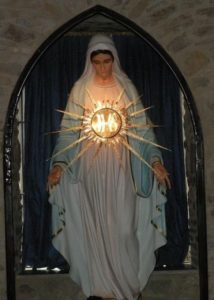 either due to the evolution of the first primitive species) the aortic evolution of the world, man with his hand will plant the vine and with his work he will make bread, ancestral and present food in all cultures.
either due to the evolution of the first primitive species) the aortic evolution of the world, man with his hand will plant the vine and with his work he will make bread, ancestral and present food in all cultures.
The aortic unveiling of the virgin who conceives the Son-God in her womb and recreates her own creation in her mother’s womb, and then will manifest itself at Pentecost on the coming of the Apostles as the second aorgic manifestation, as stated by St. Gregory Nazianzo on this moment: “God’s love is not idle; it works great things, if it really exists ”.
This unveiling will be completed as a testament to the Son-God as a covenant with men in the Eucharist: “in remembrance of me you will do it”, the last aorgic manifestation of Jesus among men, the Supreme Being becomes a Body in bread and wine : the Eucharist.
About this fact Augustine of Hippo says: “The Lord has entrusted His Body and Blood to us in such things that are reduced to unity from many others, because bread is one, although it consists of many grains, and wine it is made from many grapes”.
Now the Trinitarian God reveals himself in the Sacred Body of the Eucharist in drink and cooking made by human hands, the wine made from the vine and the baked bread from the wheat, and as it is said in Cantico dos Canticos: “Eat, friends, and drink; and intoxicate yourselves, dear friends, ”the Corpus Christis party should bring joy to millions, but the pandemic still limits the party.
Because God deprived us of such a great feast, would there be an even greater aorgic manifestation? Could the relationship between mother Mary and her Son still say something more sublime for humanity? the suffering of millions of people and the fear of this pandemic may prepare something even greater.
As the poet Hölderlin says: “where there is fear there is salvation”, but it is not yet.
Matris in gremio, blood relationship and aorgic
To understand Sloterdijk’s digression 10, it is necessary to understand its 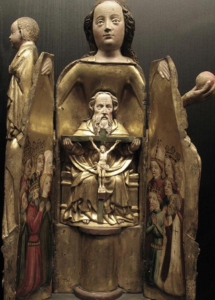 relationship with the tragedy, and a text that is certainly known to the philosopher is Hörderlin’s interpretation of the Greek tragedy Oedipus King of Sophocles, where he uses the aorgic term for the search for Epic to know who it is, the more it seeks the less conscious consciousness it becomes towards tragedy.
relationship with the tragedy, and a text that is certainly known to the philosopher is Hörderlin’s interpretation of the Greek tragedy Oedipus King of Sophocles, where he uses the aorgic term for the search for Epic to know who it is, the more it seeks the less conscious consciousness it becomes towards tragedy.
The tragedy is that father Laio, had heard from the oracle at Delphi, that his son would kill him and marry his mother Jocasta, the king hands him over to a poor shepherd to kill him, but the shepherd raises him and then he goes stop at the hands of Polybius, king of Corinth who raised him as a son, but the tragedy is fulfilled and then Oedipus kills King Laius who was his real father and marries Jocasta when he becomes aware of the blind truth, the tragedy has more details, here it is only to understand the aorgic.
However, Sloterdijk reverses this story and resumes Christian Mariology, in his tour 10 Matris in gremio (mother’s lap or lap), where after analyzing the text De humanitae conditionis in miseria by Lotário de Segni (1160-1216) that would later become if Pope Innocence III, who says that the liquid that would feed the child is the same as the menstruation that would be interrupted with pregnancy.
Sloterdijk, even though he does not believe that there are religions (so he does not have this question), will say “there is no doubt that Jesus, even in gremio, must have been provided with a different diet plan” (Sloterdijk, 2016, p. 557), and will use Question 31 from the third book of the Summa Teologica de Aquinas.
Aquinas’ argument is that “not even a better blood would have been enough to generate the body of Christ, because, by mixing with human semen, it becomes generally impure” (idem), and “… the communion of Jesus with on the contrary, the mother should be realized through blood that deserves to be classified as particularly chaste and pure ”, and quotes Tomás:
“… Because, by the action of the Holy Spirit, this blood is collected from the Virgin’s lap and formed into a fetus. That is why it is said that the body of Christ was formed by the most chaste and pure blood of the virgin.” (Aquino, Suma Theológica III, 31, 5, 3, SP: Loyola, 2001-2002).
Before Tomas de Aquinas, John Damasceno, who has already spoken of the Trinitarian pericoresis, will take this blood relationship between Maria and her fetus to the extreme, quoted by Sloterdijk: “Given that pericoresis always implies the primacy of the relationship over the outside place or precisely because the relationship itself founds the place where those who interpenetrate were found, Mary’s body cannot be buried after death in a usual way ”(SLOTERDIJK, 2016, p. 558).
And so the idea was born that Mary was taken to heaven, but it is also the birth 11 centuries before being accepted, the dogma of her Immaculate Conception (which by popular use became Conceição), thus “it is the very matrix of God who miraculously offered the sculptor the material of his sculpture, and to God the material to become a man… ” (Damasceno apud Sloterdijk, 2016, p. 558), which thus pre-announces the aorgic action of Mary with Jesus and God-Father, as a pericoresis in extremis (in the photo, also used by Sloterdijk, Virgin with Overture, late 14th century, Cluny Museum in Paris).
SLOTERDIJK, P. (2014) Bubbles: Spheres Volume I: Microspherology. UK: Semiotext(e).
Between philosophy and mysteries
The relationship between theology and philosophy has been lost for more than 5 centuries, when some serious theologian decides to talk about philosophy it is to criticize it or to admit it uncritically and then he loses his faith.
than 5 centuries, when some serious theologian decides to talk about philosophy it is to criticize it or to admit it uncritically and then he loses his faith.
I read the testimony of a former American Methodist pastor, who wrote: “I gave up Christianity because it affirms a lot and explains very little. We know so little about the Cosmos we’re floating in – our home is a solar system among trillions – but theologians brag and postulate about God, as if they have some way of knowing all of this, ”David Madison, Final Sermon in a Pandemic Team.
These are questions that many people ask, my spiritual experience always involved something that took my feet off the ground, although I strive to keep them there, I like critics of today’s religiosity, like Sloterdijk because they wake me up, and their disbelief in the The humanism of our time is a guide to my current issues, as in the pandemic and the problems that surround it.
When I think of conversion, I think first of mine and then of those who are with me on the walk and then of the “sleeping” Christians. we immersed ourselves in pericoresis, lent the text to some friends and they returned it to me with comments, I did my own pericoresis, my fusion of horizons.
And I had some answers that I didn’t imagine, one of them about what the future of humanism will be, we discovered in the middle of the pandemic solidarity as well as racism, domestic violence and the insensitivity of some in the face of the scourge, in the figure above The cross in the mountains by Caspar David Friedrich (ca 1812).
The answer and new question I found was in the reading of a text by Sloterdijk, which he calls an aortic relationship, is in the Matrix in grêmio: a mariological whim, he is not a theologian, alias he says that religions do not exist.
My question is the relation of the organic, all nature and humanity and from it the divine pericoresis, but founded on the human relationship, and as if he were a theologian, Sloterdijk answers in Digression 10 of the first volume of the Spheres Trilogy:
“Matris in gremio: A mariological whim” (page 556) in which the aortic interpenetration is combined with the organic in pregnancy, in Mary, of the Son of God, in which the two share the same spirit and the same blood, and both in Trinity and in the Virgin’s womb, interpenetration is surreal, in addition to pericoresis.
My question, what would happen if there was an aortic relationship, the organic in a real, lasting inorganic phenomenon, visible to every human being and not just to mystics? Of course this did not happen, but if it did?
SLOTERDIJK, P. (2014) Bubbles: Spheres Volume I: Microspherology. UK: Semiotext(e).

